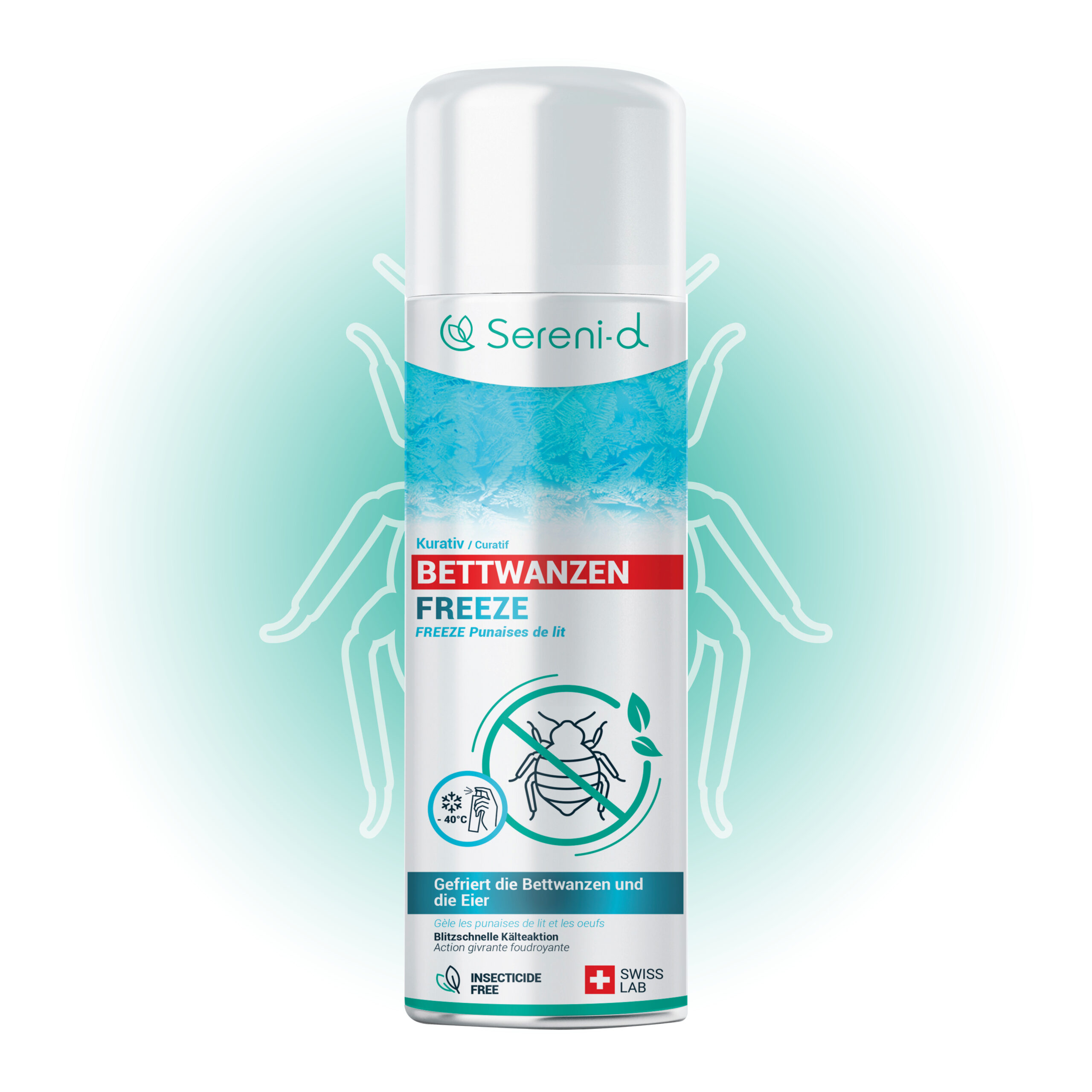Does your baby or child have bites all over his or her body? There may be bed bugs in the bedding. What can you do? How do you get rid of them? How do you quickly relieve the itching? Here’s our advice.
How can I tell if my baby has been bitten by bed bugs?
Bed bugs are nocturnal parasites that feed on blood. Unfortunately, they can also bite infants and children, and the bites and reactions are often more impressive.
Identifying bed bug bites in a baby can be tricky, as they can resemble other insect bites, such as those from mosquitoes or fleas.
Here’s how to deal with them.
How to recognize a bed bug bite
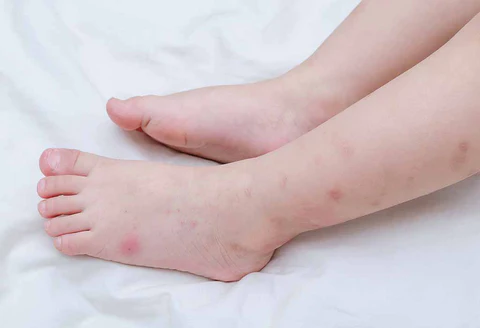
Appearance of bites
Bed bug bites on a baby usually appear as small red spots, 1 to 3 mm in size. They often resemble mosquito bites, but appear in clusters or straight lines of 1 to 5 pimples, as bed bugs bite repeatedly in an area close to exposed skin. These bites can cause intense itching in babies, whose skin is more sensitive than that of adults.
Another distinctive sign is the presence of a small red dot in the center of the pimple, corresponding to the spot where the insect has bitten. This detail can help you differentiate them from other insect bites, such as spider or flea bites.
Button thickness
In general, pimples are flat, but the reaction may vary according to the child’s sensitivity. In some cases, swelling may be greater if the baby develops an allergic reaction.
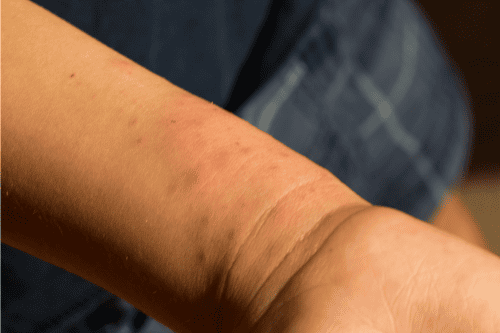
Areas affected
Les punaises de lit piquent généralement sur les parties du corps qui sont découvertes pendant le sommeil, soit chez Bed bugs generally bite on parts of the body that are uncovered during sleep, i.e. in a baby:
- face and neck
- arms and hands
- Legs and feet
- back
Bites are less frequent in areas covered by clothing, although bedbugs can sometimes slip under clothing to gain access to the skin.
When do bed bug rashes appear on babies?
On babies, as on adults, bed bug rashes generally appear 12 to 24 hours after the bites.
Signs of bed bug infestation in the bedroom
Bed bugs are discreet nocturnal insects, making them difficult to detect, especially in the early stages of infestation. In addition to bites, here are the main signs that may alert you to the presence of bed bugs.
Blood stains on sheets
When bed bugs bite, they sometimes leave small traces of blood on sheets or bedding, especially if they are crushed during the night. So check your baby’s bed for tiny red spots.
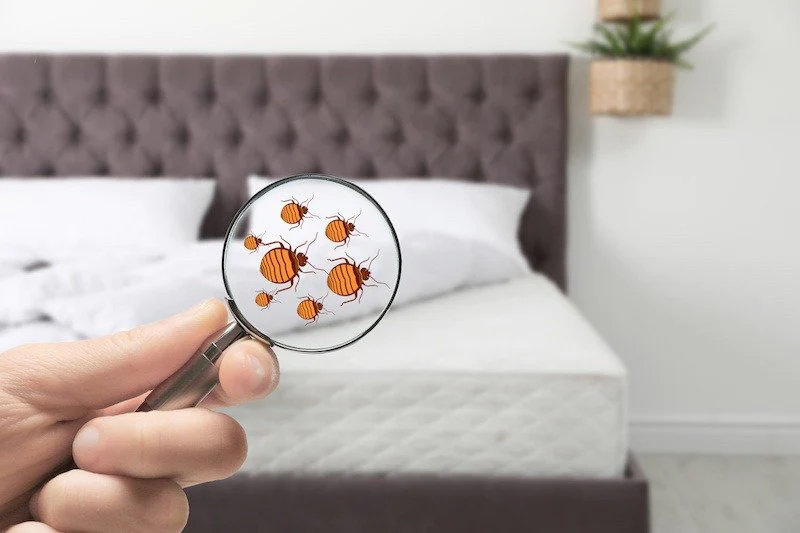
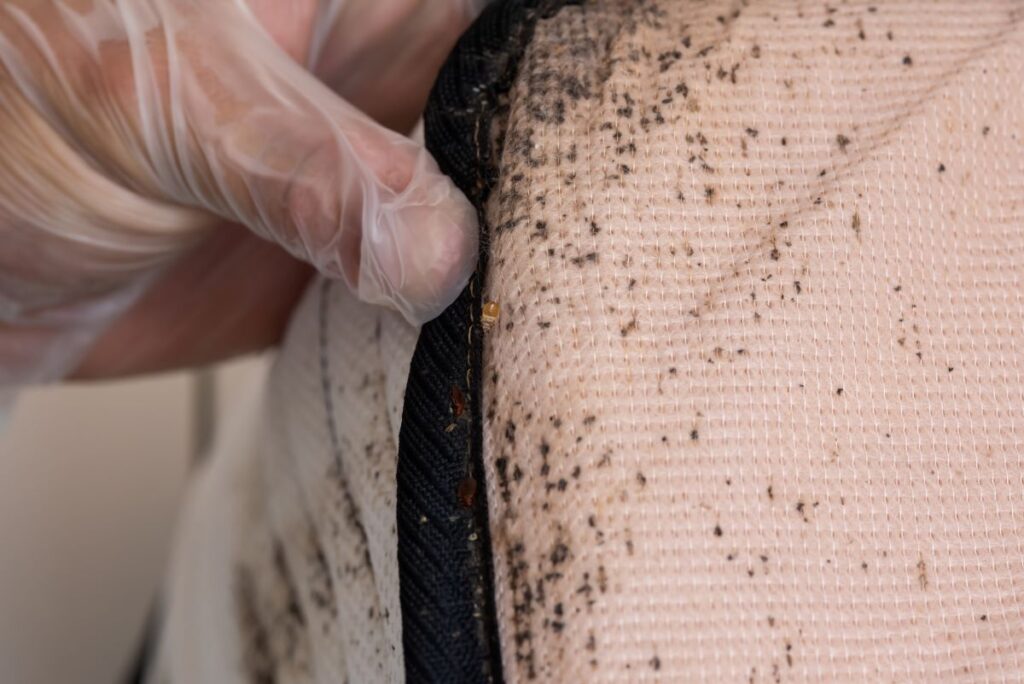
Black or dark spots
Bed bugs also leave behind small black or brown spots, which are in fact their excrement. These stains can be seen on sheets, mattresses, pillows, or even furniture near the bed.
Live bed bugs
Although bed bugs are small and hide in dark, narrow places, it’s sometimes possible to see them with the naked eye. They measure around 5 mm in length and have an oval, flattened, reddish-brown body. When bed bugs are visible to the naked eye during the day, it means the infestation is already advanced.
Also read: What do bed bugs look like?
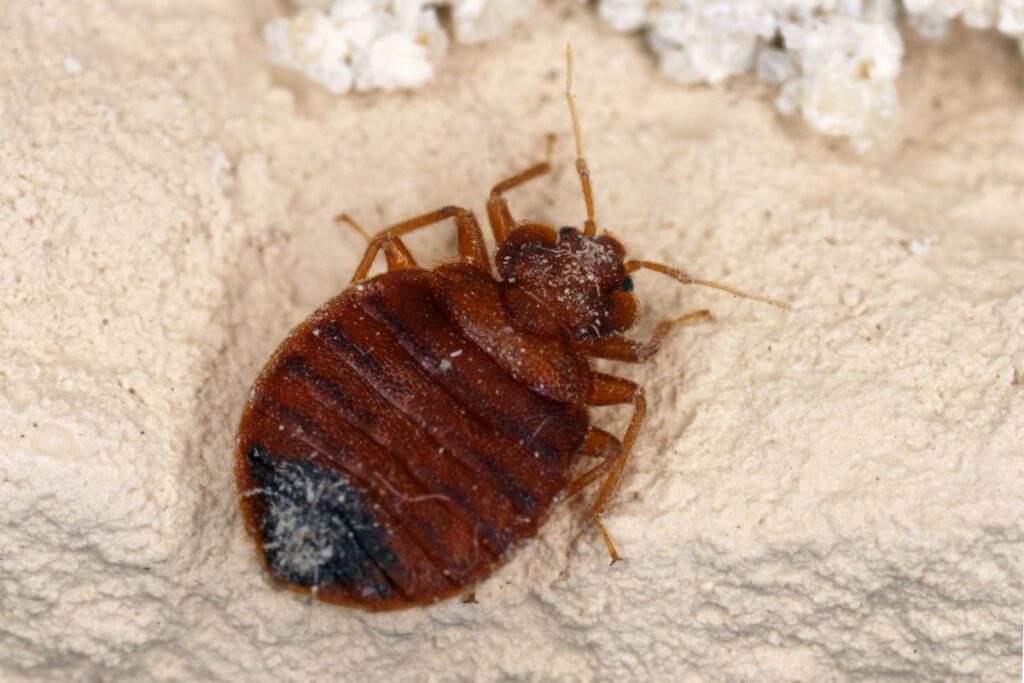
When in doubt: call in a dog detection company
Detection dogs are specially trained to spot bed bugs even in the most inaccessible places, such as cracks, nooks and seams of mattresses. This is the quickest way to confirm an infestation, so you can take the right measures to protect your baby.
➡️ All you need to know about canine detection
Are bed bug bites dangerous for babies?
Although bed bugs don’t transmit diseases, their bites can lead to certain complications in babies and young children. It should be remembered that the latter have more fragile skin and a still-developing immune system.
Here are the main concerns that bed bugs can cause for babies.
Itching and skin irritation
Bed bug bites cause intense itching, which can be very uncomfortable for a baby. Scratching the bites can further irritate the baby’s delicate skin, leading to lesions or open sores.
Risk of infection
When your baby scratches his or her bites, it can create wounds that serve as an entry point for bacteria. This can lead to a skin infection known as impetigo, characterized by redness, swelling, pus and sometimes fever. In such cases, it’s important to seek prompt medical attention. Sereni-d soothing roll-on provides immediate relief from bed bug bites. What’s more, its antiseptic and healing properties will prevent infections from developing.
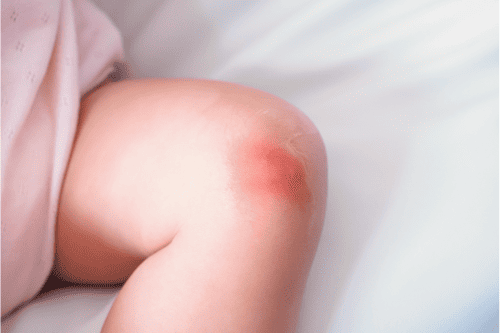
Allergic reactions
Some babies may be more sensitive to bed bug saliva and suffer allergic reactions. These can vary from mild to more severe, manifesting as widespread redness, severe swelling of the bitten areas, or even hives.
Disturbed sleep
Although bedbugs anesthetize at the moment of biting, repeated bites will cause nocturnal itching and thus disrupt your child’s sleep. Poor rest can make your baby agitated or irritated.
How to treat and relieve bed bug bites in babies?
1. Clean the affected area
The first step in treating bed bug bites in a baby is to clean the affected area:
- Wash the skin with lukewarm water and mild soap.
- Gently dry the skin with a clean towel to avoid irritating the pimples.
Remember to clip your baby’s fingernails to prevent infection from scratching.
2. Soothe itching
To relieve itching quickly, apply a cold compress to the stung area for a few minutes. The cold reduces inflammation and provides immediate relief.
You can then apply a preventive and curative Roll-On such as Serenid.
If necessary, you can obtain a corticosteroid-based cream from your pharmacy.
How to treat your baby’s bedroom for bed bugs?
Apply an anti-bed bugs protocol
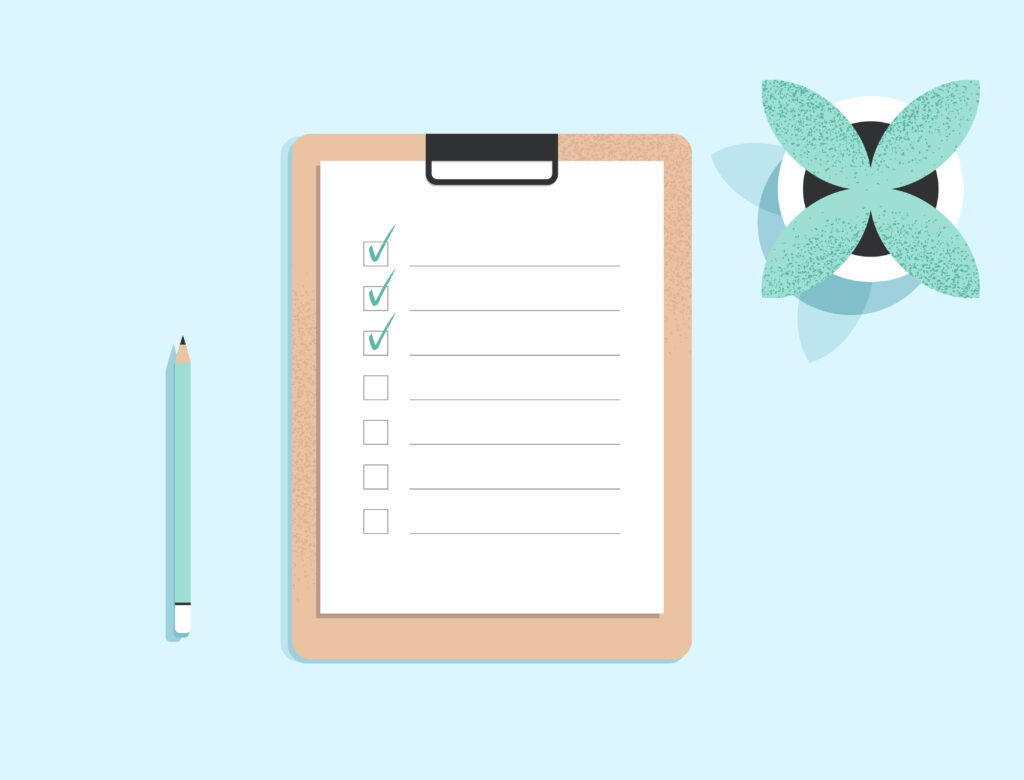
Here’s the classic anti-bed bug protocol:
- Wash all linen at a high temperature of 60°C.
- Vacuum the room thoroughly and immediately empty the vacuum bag into an airtight plastic bag for disposal outside the house.
- Use a high-temperature steam cleaner to treat hard-to-reach areas such as mattress seams, furniture nooks and carpets (steam must be at least 100°C to be effective).
- Wrap mattresses and box springs in a bed bug cover.
- Freeze non-washable items at -18°C for at least 72 hours.
Use the Serenid product range
The Serenid brand has developed a range of products that are truly effective and long-lasting against bed bugs. FREEZE bed bug treatment aerosol, which contains no active biocidal ingredients, is ideal for treating children’s bedrooms, especially cribs. Today, more than 250,000 families are satisfied.
Our formulas are carefully formulated in a Swiss laboratory.

